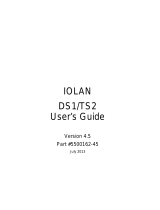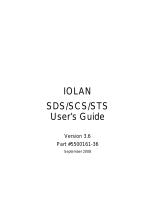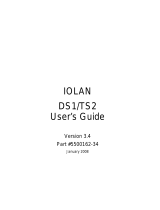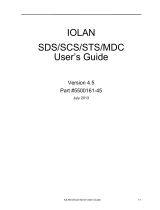Page is loading ...

The Wireless Connectivity Expert
48511 Warm Springs Blvd., Suite 206, Fremont CA 94539
Tel: (510) 490-8024 Fax: (510) 623-7268
Website: http://www.actisys.com/
E-mail: [email protected]
ACT-IR320L
Long distance Infrared Adapter
User’s Manual
© Copyright 2000-2002 ACTiSYS Corporation,
All Rights Reserved
Apr. 18, 2003 Ver. 0.1

- 1 -
A
C
T
-IR320L User’s Manual
Apr. 18, 2003
Version 0.1
Revision History
Revision Date Comment
Rev. 0.1 02/28/2002 Draft Preliminary Design Specification for internal review.

- 2 -
A
C
T
-IR320L User’s Manual
Apr. 18, 2003
Version 0.1
TABLE OF CONTENTS
1. Overview.................................................................................................................................3
2. Features ..................................................................................................................................4
3. Applicable description..........................................................................................................4
4. DTE-DB9M Connector description ......................................................................................5
5. Characteristics and Specification .......................................................................................6

- 3 -
A
C
T
-IR320L User’s Manual
Apr. 18, 2003
Version 0.1
Level
Convertor
Micro controller
Logic
Circuit
Optical
Transceiver
1. Overview
The ACT-IR320L is a long distance infrared adapter that enables the host system with long
distance infrared communication capabilities. The host system may be an industrial controller, a
data collector, a medical instrument, or any other device. The interface between ACT-IR320L and
the host is via a traditional asynchronous serial data port (RS232C). Figure 1.1 shows the system
block diagram.
Figure 1.1 System Block Diagram
ACT-IR320L
RS232C

- 4 -
A
C
T
-IR320L User’s Manual
Apr. 18, 2003
Version 0.1
2. Features
Long distance transmitting/receiving adapter by using 455KHz ASK-IR technology.
Supports max. 15 meters transmitting/receiving distance.
9.6kbps, 19.2kbps and 38.4kbps RS232 baud rate supported.
Instantly convert RS232 Port to IR, without special IrDA protocol SW and use existing
application SW.
True cable-to-IR replacement using ASK-IR technology.
No SW Modification Required: Single IR Speed using IR320L, used as a pair.
No buffer in circuit, no delay causes.
3. Applicable description
ACT-IR320L uses 455KHz ASK-IR technology to support long distance transmitting/receiving,
ASK-IR is a technology that base on sub-carrier and it is not compatible to IrDA. Therefore, it
should be used as a pair when using IR320L.
Once ACT-IR320L is connected to serial port of host device, it enters ready mode, the LED is
lighting. There are two ways can make IR320L to enter active mode. One is the host device sends
some data to it by passing RxD pin, another is that IR320L receives ASK sub-carrier from outside
and passes those data to TxD pin. When IR320L is in active mode, the LED is flashing.
ACT-IR320L detects RxD pin’s level and turn the ASK sub-carrier on and off when it is sending data,
thus it is no need to care about baud rate setting, but limited by the frequency of ASK modulation,
the baud rate supported up to 38.4Kbps.
Generally, there is two ways to connect to a serial port. One is 3-wires(Flow control free), another
is 9-wires(Flow control enables). Based on the ACT-IR320L is no buffer in circuit, it is a 3-wires
operating dongle, it doesn’t has to enable flow control mechanism. It means that it doesn’t detect
the DSR and CTS pins from host device and always pull DTR and RTS pins to high. Application
program should take care about flow control itself.
The radiant intensity of ACT-IR320L relates to angle between two dongles that face to face, the
Angle of half intensity is +/- 10
∘.
It will get more effective performance by adjusting angle.

- 5 -
A
C
T
-IR320L User’s Manual
Apr. 18, 2003
Version 0.1
4. DTE-DB9M Connector description
ACT-IR320L is a DTE adapter, like serial port on PC, it can connect to any DCE device directly. If
you want to connect this adapter to Notebook or Desktop computer, the DB9F-to-DB9F converter is
needed. The converter plays like a null-modem, redirects serial port signals from DTE to another
DTE.
Pin No. Name Descriptions I/O
1 CD
Data Carrier Detect I
2
RXD Receiver Data I
3 TXD Transmitter Data O
4 DTR Data Terminal Ready O
5 GND Signal Ground GND
6 DSR Data Set Ready I
7 RTS Request to Send O
8 CTS Clear to Send I
9 RI Ring Indicator I
Front View

- 6 -
A
C
T
-IR320L User’s Manual
Apr. 18, 2003
Version 0.1
5. Characteristics and Specification
Parameter MIN. TYPICAL MAX. Units
DC supply voltage 5.0 7.5 12 V
Supply voltage, VSS 0 V
Operating free-air temperature range, TA 0 40
℃
DC current (Ready mode) 2 mA
DC current (Active mode) 200 300 mA
RS232 signal threshold level +/-3 +/-12 +/-25 V
/














